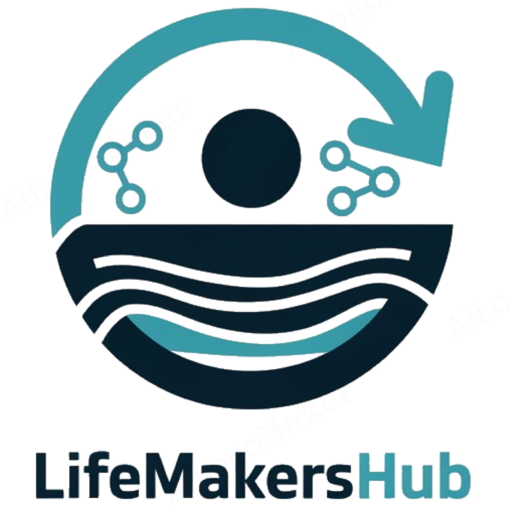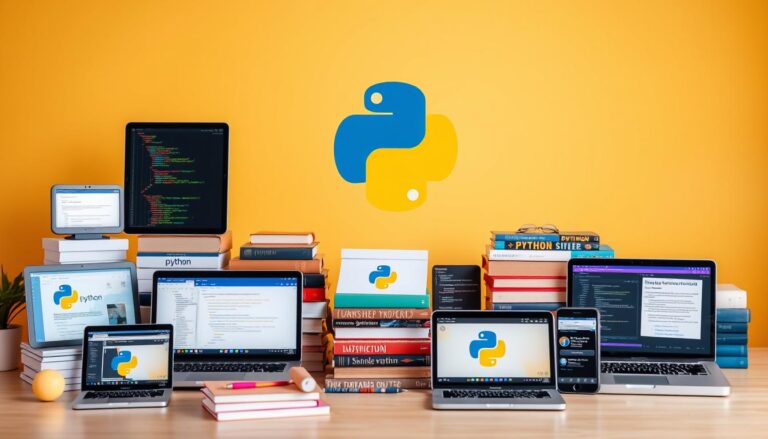Unlock Your Personal Growth Potential
Everyone has the potential to grow and achieve success in their work and life. Personal development is a lifelong process that helps you improve self-awareness, build skills, and enhance your quality of life. It’s not just about reaching goals but also about understanding yourself better and making meaningful changes1.
This guide will walk you through practical steps and actionable tips to take charge of your journey. From setting clear goals to learning new skills, personal growth involves multiple aspects that can transform your life. Whether you’re looking to boost confidence, improve relationships, or find purpose, this process can help you get there2.
By focusing on areas like emotional intelligence, communication, and problem-solving, you can unlock your full potential. Remember, growth is a journey, not a destination. With the right tools and mindset, you can create a plan that works for you and start seeing results today3.
Key Takeaways
- Personal development is a lifelong process that improves self-awareness and skills.
- Setting clear goals is essential for meaningful growth.
- Emotional intelligence and communication are key areas to focus on.
- Practical tools and actionable tips can help you take charge of your journey.
- Growth is a continuous journey, not a one-time achievement.
Understanding the Foundations of Personal Development
Self-awareness is the cornerstone of meaningful progress in life. It helps you understand your strengths, weaknesses, and values. This understanding sets the stage for setting clear goals and pursuing a purposeful life1.
Exploring Self-Awareness and Identity
Knowing who you are is the first step toward growth. It involves reflecting on your thoughts, emotions, and actions. Increased self-awareness leads to better decision-making and improved relationships3.
Understanding your identity also helps you align your actions with your values. This alignment is crucial for long-term success and fulfillment2.
Maslow’s Hierarchy and the Pursuit of Self-Actualization
Maslow’s hierarchy of needs explains how human motivation progresses. It starts with basic physiological needs and moves up to self-actualization2.
- Physiological Needs: Food, water, and shelter.
- Safety Needs: Security and stability.
- Social Needs: Relationships and belonging.
- Esteem Needs: Respect and recognition.
- Self-Actualization: Achieving your full potential.
Meeting lower-level needs empowers you to focus on higher-level growth. Aligning your values with self-actualization ensures sustained progress2.
Developing a Personalized Growth Plan
Creating a clear vision for your future is the first step toward meaningful progress. A well-defined plan helps you stay focused and motivated, ensuring you achieve your aspirations. Whether you’re aiming for career advancement, improved relationships, or a more fulfilling life, a personalized growth plan is your roadmap to success1.
Crafting Your Vision and Setting Meaningful Goals
Your vision is the foundation of your growth journey. It’s a vivid picture of where you want to be in the next few months or years. Start by asking yourself: What do I truly want to achieve? Align your vision with your core values to ensure it resonates deeply with you3.
Once your vision is clear, break it down into actionable goals. Use the SMART framework—Specific, Measurable, Achievable, Relevant, and Time-bound. This approach ensures your goals are realistic and trackable. For example, instead of saying, “I want to be healthier,” set a goal like, “I will exercise for 30 minutes, five days a week, for the next three months.”
Designing an Actionable Personal Development Plan
An actionable plan turns your goals into reality. Start by identifying the skills and knowledge you need to acquire. For instance, if your goal is to advance in your career, focus on developing leadership or technical skills2.
Next, create a timeline with milestones to track your progress. Regularly review and adjust your plan to stay on track. Tools like vision boards, journals, or apps can help you stay organized and motivated.
Goal-Setting Strategies
| Strategy | Description | Example |
|---|---|---|
| SMART Goals | Specific, Measurable, Achievable, Relevant, Time-bound | “I will complete a certification course in six months.” |
| Vision Boards | Visual representation of your goals | Create a board with images of your dream career. |
| Milestone Tracking | Break goals into smaller, manageable steps | Set monthly check-ins to review progress. |
Remember, your growth journey is unique. Stay committed, embrace challenges, and celebrate small wins along the way. With a clear vision and actionable plan, you’re well on your path to achieving your full potential1.
Actionable Steps and Practical Tools for Growth

Taking actionable steps is the key to turning your growth goals into reality. By incorporating daily practices and leveraging practical tools, you can create a structured path toward success. Let’s explore how to make your journey more effective and fulfilling.
Implementing Daily Practices and Mindfulness Techniques
Daily habits play a crucial role in fostering growth. Start with mindfulness techniques like meditation or deep-breathing exercises. These practices help manage stress and improve focus, which are essential for sustained progress2.
Journaling is another powerful tool. Reflecting on your thoughts and experiences can enhance self-awareness and clarity. It also helps you identify patterns and areas for improvement3.
Utilizing Coaching, Courses, and Reflective Journals
Working with a coach or mentor can significantly boost your growth. They provide guidance, accountability, and tailored strategies to help you achieve your goals1.
Online courses and workshops are also valuable resources. They offer structured learning opportunities to develop new skills and expand your knowledge. Pair these with reflective journals to track your insights and progress3.
Tracking Progress and Making Adjustments
Regularly monitoring your progress ensures you stay on track. Break your long-term goals into smaller milestones. This approach keeps you motivated and allows for timely adjustments2.
Feedback from mentors, peers, or even self-assessments can highlight areas for improvement. Use this input to refine your strategies and overcome challenges1.
By combining these actionable steps and practical tools, you can create a sustainable growth plan. Remember, small, consistent efforts lead to significant results over time.
Overcoming Challenges on Your Personal Growth Journey
Setbacks are not roadblocks but stepping stones to greater success. Every challenge you face is an opportunity to learn, adapt, and grow. Embracing failure as part of the process can transform obstacles into valuable lessons1.
Embracing Failure and Building Resilience
Failure is a natural part of any journey. Instead of fearing it, use it as a tool for growth. Reflect on what went wrong and identify areas for improvement. This mindset shift can turn setbacks into powerful motivators3.
Building resilience is essential for long-term success. Practices like mindfulness and journaling can help you stay grounded during tough times. Seeking feedback from mentors or peers also provides valuable insights for improvement1.
Navigating Setbacks and Refining Your Approach
When faced with obstacles, take a step back and reassess your strategy. Reframing setbacks as opportunities allows you to refine your approach and stay on track. For example, if a goal feels unattainable, break it into smaller, manageable steps.
Maintaining motivation is key. Celebrate small wins and remind yourself of your ultimate vision. Adaptability and persistence are your greatest allies in overcoming challenges and achieving your goals3.
| Strategy | Description | Example |
|---|---|---|
| Reflection | Analyze setbacks to identify lessons | Journal about what went wrong and how to improve. |
| Feedback | Seek input from mentors or peers | Ask for advice on overcoming specific challenges. |
| Adaptation | Adjust your approach based on insights | Break large goals into smaller, actionable steps. |
Remember, the journey to growth is not linear. Each challenge you overcome brings you closer to your goals. Stay committed, embrace the process, and keep moving forward1.
Integrating Personal Development in Everyday Life

Balancing self-care with professional responsibilities is key to sustained progress. Integrating growth into your daily routine doesn’t have to be overwhelming. Small, intentional changes can make a big difference over time. Let’s explore how to seamlessly blend development with your busy schedule.
Balancing Work, Life, and Self-Care
Maintaining a healthy work-life balance is vital for productivity and avoiding burnout2. Start by setting boundaries between work and personal time. For example, designate specific hours for work and stick to them. This helps create a clear separation between professional and personal life.
Self-care is equally important. Practices like mindfulness and regular exercise can reduce stress and improve focus3. Schedule time for activities that rejuvenate you, whether it’s reading, meditating, or spending time with loved ones.
Here are some practical tips for balancing work, life, and self-care:
| Strategy | Description | Example |
|---|---|---|
| Time Blocking | Allocate specific times for work and personal activities | Set aside 7 PM for family dinner daily. |
| Mindfulness Breaks | Take short breaks to practice mindfulness | Do a 5-minute breathing exercise every 2 hours. |
| Self-Care Routine | Create a daily routine for self-care | Exercise for 30 minutes every morning. |
Cultivating a Supportive Growth Environment
A supportive environment is essential for long-term development. Surround yourself with people who encourage and inspire you. This could be friends, family, or a mentor who provides guidance and accountability1.
Building a community of like-minded individuals can also boost your growth. Join groups or forums where you can share experiences and learn from others. Peer networks offer valuable insights and motivation to stay on track2.
Here’s how to create a supportive environment:
- Find Accountability Partners: Share your goals with someone who can keep you motivated.
- Join Growth Communities: Participate in groups focused on personal or professional development.
- Seek Feedback: Regularly ask for input to refine your approach and improve.
By integrating these strategies into your daily life, you can create a sustainable path for growth. Remember, small, consistent efforts lead to significant results over time.
Conclusion
Your journey toward growth begins with understanding and action. By focusing on self-awareness and setting clear goals, you can create a path that aligns with your values and aspirations. Remember, this is a continuous process, not a one-time event1.
Daily practices like mindfulness and journaling can enhance your progress. These small, consistent efforts build resilience and keep you motivated. Surround yourself with supportive people who encourage your development and hold you accountable3.
Integrating these strategies into your daily routine ensures long-term benefits. Whether it’s improving relationships or advancing in your career, the effort you invest today will shape a more fulfilling life tomorrow. Start now, and take the first step toward unlocking your full potential.







